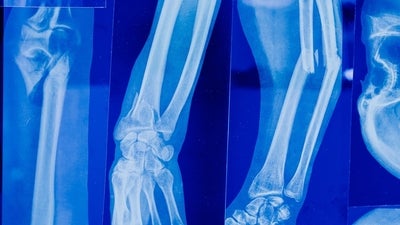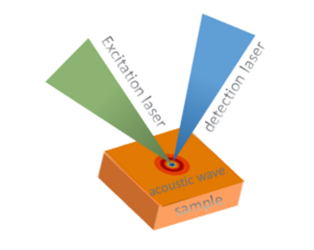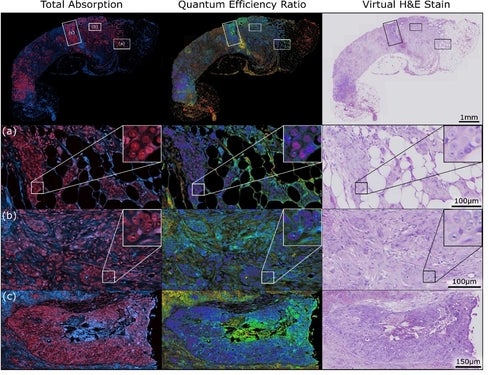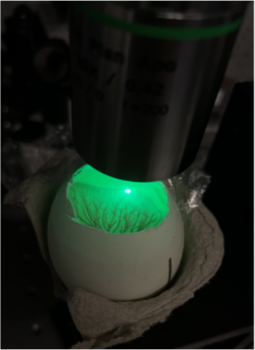Biomedical systems is the application of engineering principles and design concepts to medicine and biology for healthcare purposes. The field seeks to close the gap between engineering and medicine, combining the design and problem-solving skills of engineering with medical and biological sciences to advance healthcare treatment, including diagnosis, monitoring, and therapy.
Projects
Detecting Bone Fragility to Prevent Fractures
This project examined the fundamental fracture mechanisms of bone to develop preventive measures, particularly for the elderly who are prone to falls and hip fractures. By simulating real falls and examining the micro-damage process zone, they discovered that a higher loading rate resulted in smaller damage zones, indicating brittle fractures and reduced resistance. Understanding these mechanisms may lead to improved detection, prevention, and treatment of bone fragility, potentially reducing the incidence of fractures. The study was funded by the University of Waterloo Network for Aging Research and the Canadian Institutes of Health Research.

Project by Dr. Thomas Willett, Dr. Andrew Laing, Daniel Dapaah, Daniel Martel
Fundamental research in light-matter interaction
Fundamental research in light-matter interaction investigates how light and matter interact at atomic and molecular levels, spanning from photons with atoms to bulk materials. In this project, the research team at PhotoMedicine Labs delves into these interactions, studying absorption, scattering, emission, and nonlinear optical phenomena. The primary focus is on photon absorption remote sensing (PARS) microscopy, a powerful technique blending optics and acoustics to probe materials and tissues using laser-induced ultrasound waves. This non-invasive approach uncovers mechanical properties. Through deeper physics understanding, we enhance PARS microscopy, advancing imaging, diagnostics, and therapies for medical and biological research, as well as clinical applications. Our work contributes to a new realm of optical technologies with profound potential.

Project by Dr. Parsin Haji Reza
Label-Free Virtual Histology for Rapid Cancer Diagnosis
Histological visualizations are crucial for understanding clinical diseases but often involve labor-intensive processes and delay critical feedback. Current methods rely on staining with exogenous labels like hematoxylin and eosin (H&E), altering tissue structure. This project addresses this by focus on photon absorption remote sensing (PARS), capturing label-free contrast. PARS utilizes unique absorption spectra of biomolecules to reveal chemical properties and composition. It captures optical interactions during excitation, enabling detailed insights. For instance, imaging preserved human breast tissues with PARS shows radiative and non-radiative absorption fractions combined in a total absorption image. PARS can also provide biomolecule-specific features like the quantum efficiency ratio (QER), potentially emulating traditional stains. AI processing enhances PARS capabilities, paving the way for direct label-free histological imaging of unstained tissues, even in-situ, with varied histochemical contrasts. This innovation holds promise for expediting diagnosis and treatment decisions.

Project by Dr. Parsin Haji Reza
Miniaturized optical imaging devices
Miniaturized optical imaging systems use compact components to capture images on a smaller scale, offering portability and integration with technologies like endoscopy. Challenges include designing tiny distal optics that match benchtop performance. This ongoing project focuses on fiber-based photon absorption remote sensing (PARS) microscopy. The research team is developing a novel form factor to achieve high-quality images comparable to tabletop systems, but in a flexible probe. This aims for a comprehensive endoscopic system, enabling optical biopsies to reduce patient discomfort and provide prompt diagnoses. The goal is to revolutionize medical imaging by combining portability with top-tier performance, enhancing patient care.
Project by Dr. Parsin Haji Reza

Novel functional ophthalmic devices
Eye diseases like diabetic retinopathy and glaucoma impact 8 million Canadians, and existing diagnostic tech lacks functional metrics like oxygen saturation. The focus of this project is innovative ophthalmic devices that combine structural and functional imaging for better ocular disease diagnosis and management. A prime example is the use of photon absorption remote sensing (PARS) microscopy. This project is refining in-vivo PARS to enhance safety, repeatability, and functional parameter measurement like blood oxygenation and metabolic rate. PARS functional imaging holds promise for accurate non-contact, label-free functional measurement. Successful development could empower ophthalmologists, potentially preventing vision loss in millions of Canadians. This paradigm shift in ocular diagnostics could transform disease management.
Project by Dr. Parsin Haji Reza
